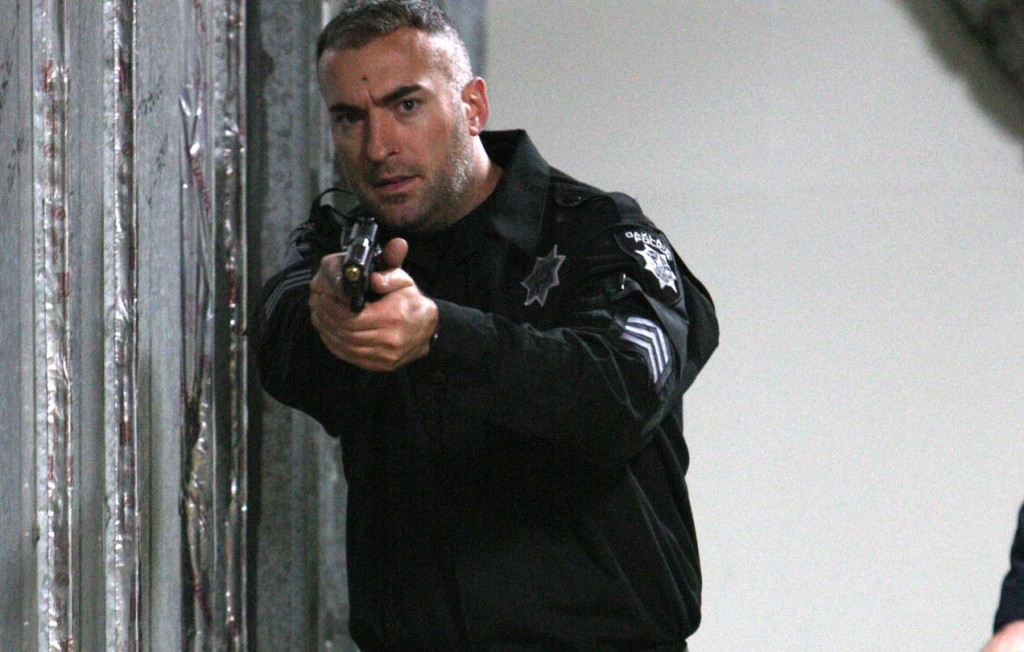
Written by Ali Winston REPOST from The Investigative Fund dot Org
Five years and seven months after Gary King Jr. was shot to death by Oakland Police Sergeant Patrick Gonzales on 54th Street and Martin Luther King Jr. Way, the Alameda County District Attorney has cleared Sgt. Gonzales of criminal misconduct in King Jr.’s death. On September 20, 2007 Gonzales mistook the 20-year-old exiting a store on the street corner for a murder-robbery suspect, and the ensuing confrontation left the young man with two gunshot wounds in his back, handcuffed, and bleeding to death.
The DA’s findings puts paid to the possibility that Sgt. Gonzales could face state criminal charges for King Jr.’s shooting.
Over the years, Sgt. Gonzales has become a lightning rod for critics of the troubled Oakland Police Department, which is struggling to fulfill federal reforms begun a decade ago. Since joining OPD in the late 1990s, Gonzales has featured in some of OPD’s most controversial moments, from a police assault on unarmed protesters opposing the Iraq War in 2003 and the shooting of cop-killing parolee Lovelle Mixon to the department’s violent response to Occupy Oakland. He has been involved in four officer-involved shootings over the years, and the city has paid out $3.6 million to date in legal settlements for incidents in which Gonzales played a part.
The eleven-page findings letter — which is issued by district attorneys when they find that an officer-involved shooting did not constitute criminal conduct — is dated April 17th. It was authored by Senior Deputy DA Jeff Stark (the son of former East Bay Congressman Pete Stark) and Lieutenant Mark Scarlett of the DA’s investigations unit. The DA’s letter indicates that when Gonzales attempted to detain King “he resisted,” and that during the ensuing struggle Gonzales tasered King twice “to no effect.” The report claims that King Jr. “then reached into his pant’s pocket” and when Gonzales reached down to grab his hand, he “felt a gun.”
The DA’s report states that at this point, King Jr. broke away from Gonzales, who drew his pistol and ordered the youth to get on the ground. The report continues: “Mr. King, still reaching for his gun, turned away from Sergeant Gonzales. He believed Mr. King posed an immediate, life-threatening danger to himself and other people in the immediate area. He fired two shots from his pistol at Mr. King from within 10 feet,” fatally wounding King Jr.
As I reported in the joint Colorlines-Investigative Fund project, “Deadly Secrets,” a revolver was found at the scene. The DA’s report states that the .32 caliber pistol was loaded, that “every detail in Sergeant Gonzales’ statement was corroborated by witnesses and by the liquor store’s video,” and that an OPD criminologist determined the revolver was in “normal working order.” However, in 2011, I reported that OPD told me that King Jr.’s revolver was broken. This was corroborated by Michael Haddad, the attorney who filed a successful $1.5 million wrongful death suit on behalf of King’s family. The liquor store video, which I reviewed, showed King Jr. fleeing towards the intersection, appearing to hold up his baggy pants by the waist.
During the struggle, the DA’s report notes that King Jr. repeatedly reached for his pants, interpreting this as the youth “attempting…to get the loaded gun out of his pants.” However, no witnesses ever saw King Jr. draw the gun.
Gary King Jr.’s father said the Alameda District Attorney’s findings were “outrageous and an insult to my family and my community.” Clearing Gonzales’ conduct, King Sr. said, “is a direct result of them dropping the ball, from the City Council and the Mayor on down;” he believes that the Alameda DA want his son’s case “to go under the rug and for people to forget about this.”
In writing the King Jr. letter, Stark also reviewed Gonzales’ prior shootings: the death of Joshua Russell, a robbery suspect armed with a shotgun who Gonzales and another officer shot to death in 2002, and the non-fatal shooting of teenager Ameir Rollins in 2006 that left Rollins a quadriplegic. The DA’s report claims that Rollins pointed a rifle at Gonzales and his partner, and that Gonzales shot Rollins twice, in the arm and the neck. But rather than conducting an independent investigation, the DA’s report relied on a previously confidential police report; the DA also neglected to review medical records or interview Rollins. When I spoke with Rollins in a January 2011 interview, he told me that Gonzales fired just one shot after Rollins had dropped the rifle and raised his hands, which struck him first in the wrist and then in the neck. Rollins settled a civil rights lawsuit against Gonzales and the OPD for $100,000.
A review of 22 findings letters by the Alameda DA’s office over a ten-year period indicates the King Jr. report is one of only four letters that have taken this long — more than four years — to complete. The discrepancies between the DA’s account of the Ameir Rollins shooting and Rollins’ own recollections, the reliance on OPD’s own documentation and investigation of the incident and half a decade of lag time before clearing Sgt. Gonzales all call into question the veracity of the DA’s findings letter.
“I’m sure I had it completed beforehand,” said Stark, when asked about the lag between the original shooting and the date when his report was forwarded to OPD Police Chief Howard Jordan on April 17.
FOR MORE WECOPWATCH COVERAGE of Patrick Gonzales go to last weeks WECOWATCH writeup
